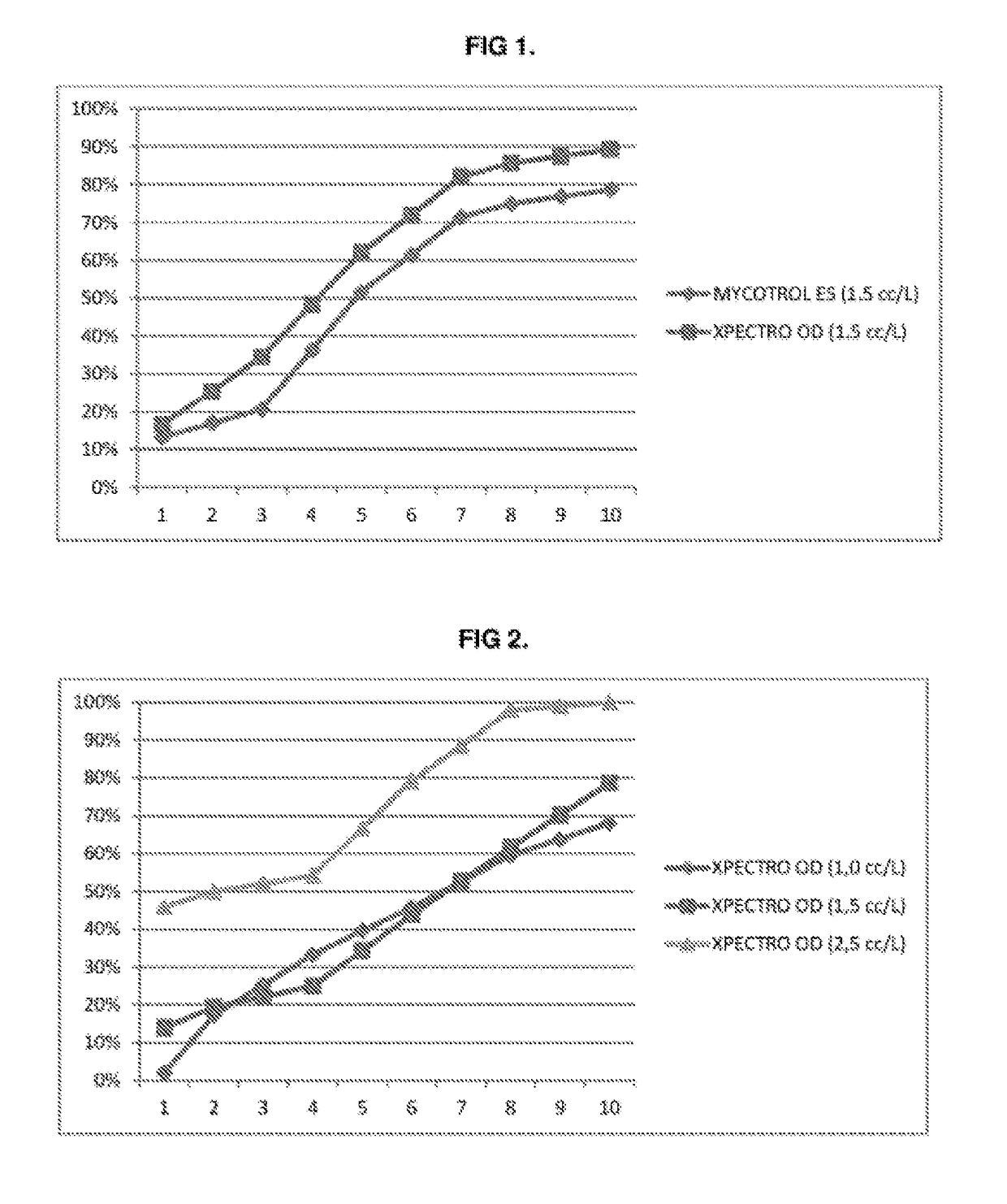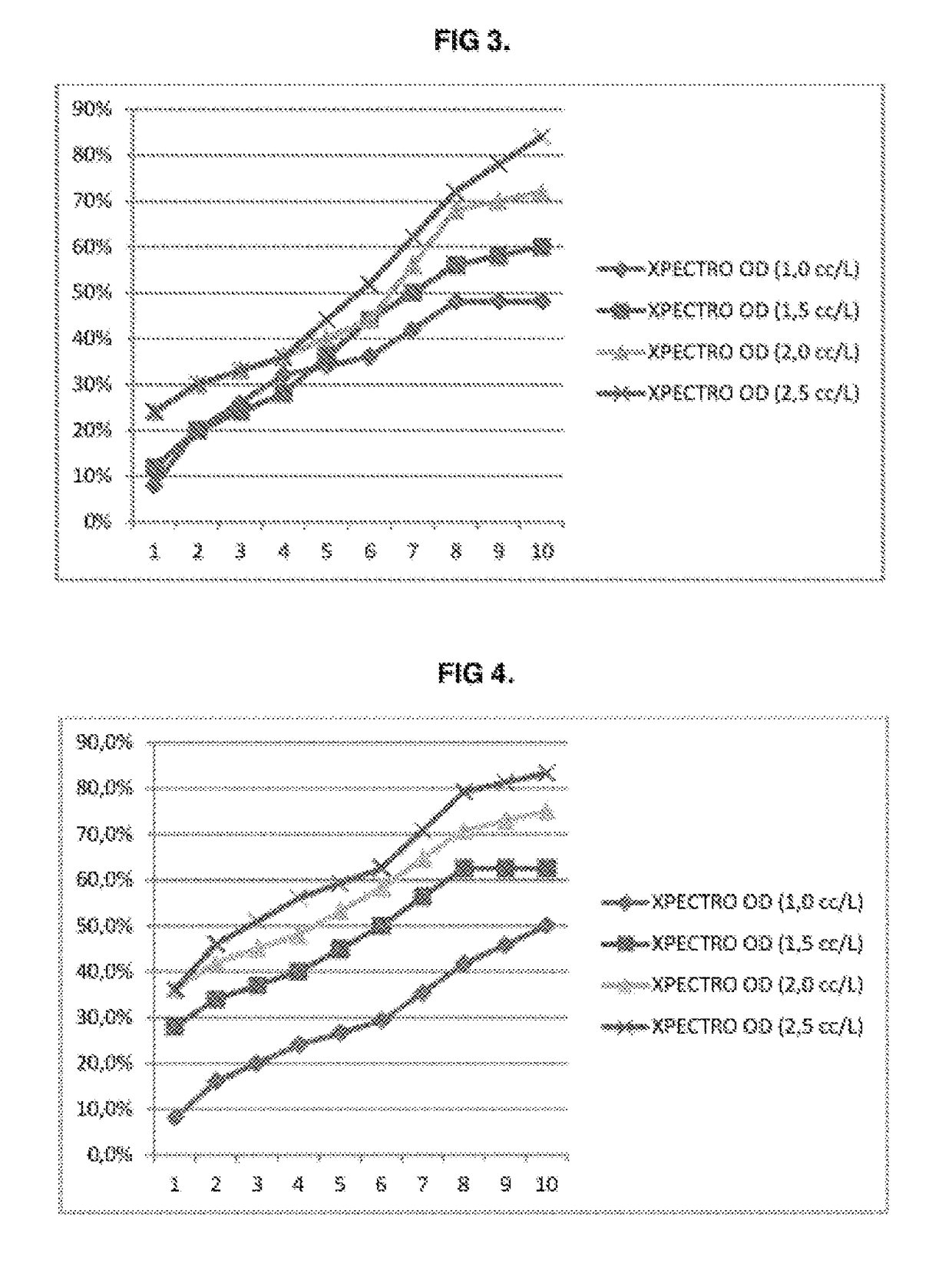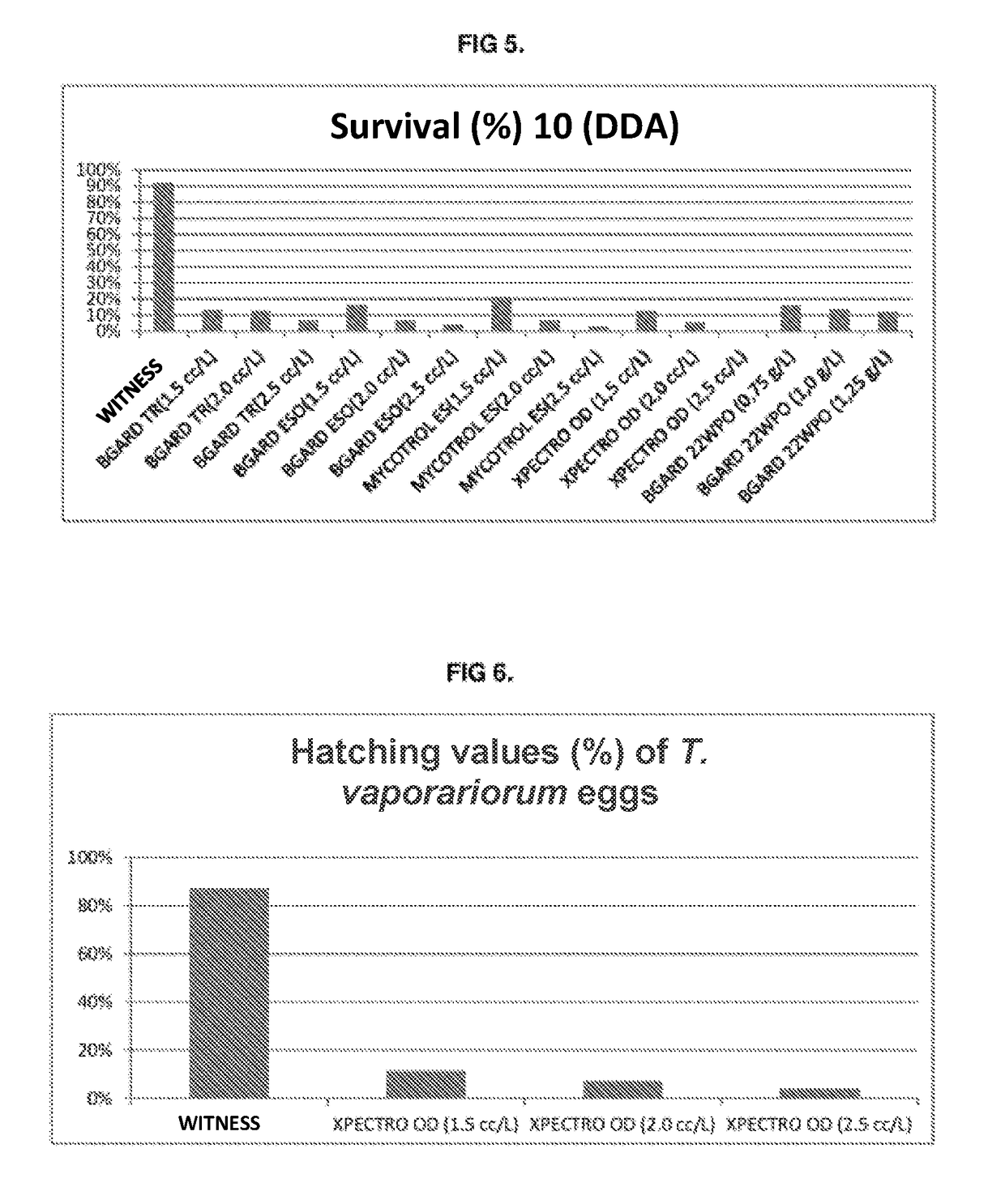Pesticide composition
a technology of pesticides and compositions, applied in the field of pesticide compositions, can solve the problems of affecting the health of consumers, and affecting the growth of non-targeted species,
- Summary
- Abstract
- Description
- Claims
- Application Information
AI Technical Summary
Benefits of technology
Problems solved by technology
Method used
Image
Examples
example 2
the Pyrethrum Botanical Extract
[0051]From Chrysanthemum cinerariaefolium and Chrysanthemum cineum flowers the pyrethrum extract was obtained by the following process: the dried flowers were milled and a first percolation solution was extracted with hexane. This solution was filtered and evaporated to a viscous brown dark greenish liquid called “brut” or “oleoresin”, which contains about 30% of pyrethrins and 67% of other plant substances.
[0052]The crude extract was divided in a solvent and then ogánico decolorized. The solvent was distilled off and the residue was dissolved in the final diluent with higher boiling point. Pyrethrins concentration was adjusted to a standard level by adding an isoparaffinic diluent.
[0053]As a final result refined pyrethrum extract 50% v / v, containing about 50% of pyrethrins and 37% of other plant substances and their characterization is obtained as follows:[0054]Conversion factor (20° C. 101 kPa): 1 mg / m3=0.074 ppm (for pyrethrin I)[0055]Molecular form...
example 3
on of Pesticidal Compositions
[0059]Pesticidal compositions of Beauveria bassiana BbGHA1991 and pyrethrum botanical extract were prepared. Initially, it is added botanical pyrethrum extract an oily vehicle containing a surfactant or surfactant to a final concentration of extract 1, 0%. In the suspension containing pyrethrum extract, Beauveria bassiana BbGHA1991 were conidia suspended to a concentration between 1×109 and 1×1012 conidia / L. Other components of the composition are shown in Table 1.
TABLE 1COMPONENTCONCENTRATIONBeauveria bassiana BbGHA1991 strain1 × 109-1 × 1012 conidia / Lpyrethrum botanical extract 5-20 g / LPolyethylene Glycol trimethyl nonyl ether80-120 g / LParaffinic hydrotreated mineral oilc.s.p. 1.0 L
[0060]The final concentration of conidia was determined by hemacytometer counting and viability by a germination test. The viability of the conidia in preparations evaluated in all bioassays was above 85%.
example 4
Trials
[0061]The purpose of evaluating the effectiveness in the laboratory is to estimate the effects arising from the use of the compositions at different doses to determine the lowest effective dose. The test laboratory under controlled environments eliminates other biotic factors that can affect the test.
[0062]A pesticidal composition obtained according to Example 3 (XPECTRO OD) was determined at different doses effectiveness by applying direct and indirect contact about nymphs and adults, Trialeurodes vaporariorum, Tetranychus urticae, Epitrix sp, Macrosiphum sp. The percentages of T. vaporariorum effectiveness are shown in Table 2 and behavior of the effectiveness of treatments for T urticae, Epitrix sp and Macrosiphum sp are illustrated in FIGS. 1 to 4.
[0063]The survival values (%) of T. vaporariorum nymphs 10 days after (10 DAA) application illustrated in FIG. 5, while the Hatching values (%) of T. vaporariorum eggs (10 DAA) are illustrated in FIG. 6.
[0064]Product application ...
PUM
 Login to View More
Login to View More Abstract
Description
Claims
Application Information
 Login to View More
Login to View More - R&D
- Intellectual Property
- Life Sciences
- Materials
- Tech Scout
- Unparalleled Data Quality
- Higher Quality Content
- 60% Fewer Hallucinations
Browse by: Latest US Patents, China's latest patents, Technical Efficacy Thesaurus, Application Domain, Technology Topic, Popular Technical Reports.
© 2025 PatSnap. All rights reserved.Legal|Privacy policy|Modern Slavery Act Transparency Statement|Sitemap|About US| Contact US: help@patsnap.com



